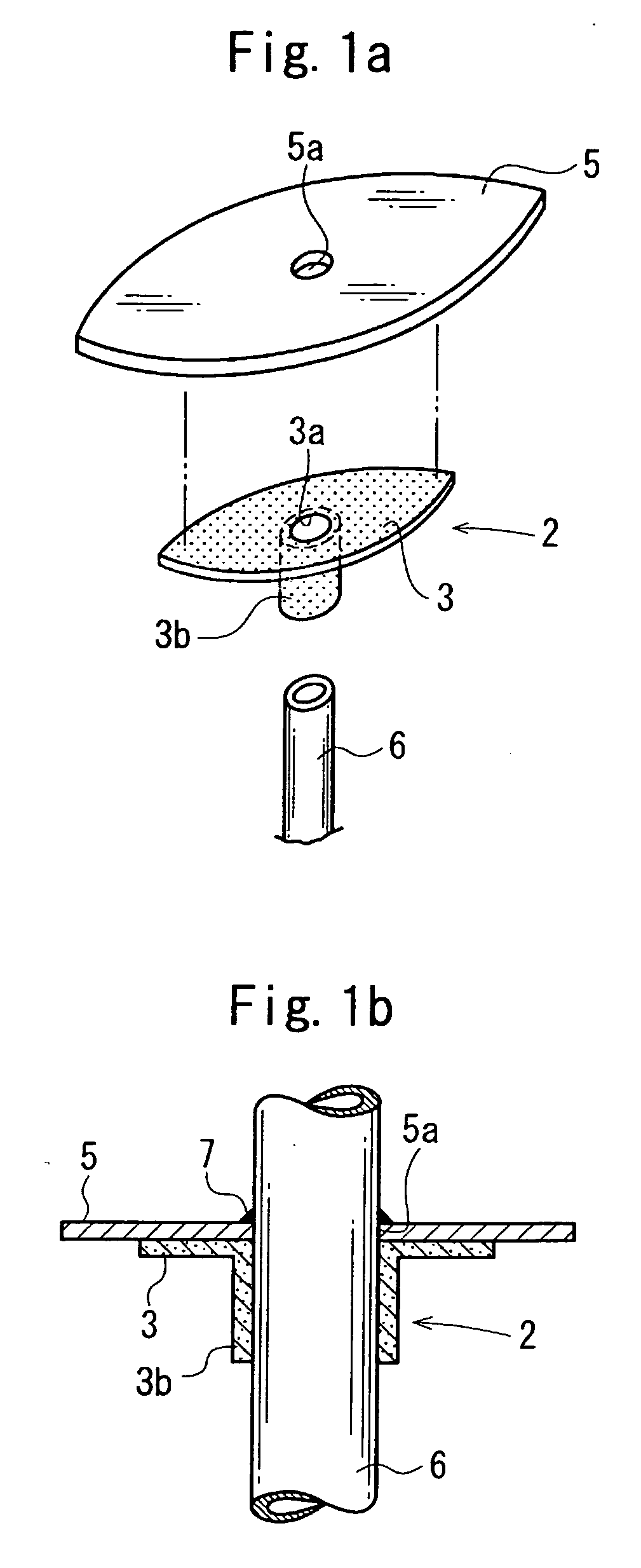Cuff member
a cuff and rib technology, applied in the field of cuff members, can solve the problems of reduced adhesion between the cuff members, increased infection, and cuff members, and achieve the effects of preventing exposure, inhibiting downgrowth, and enhancing cell invasion and engrafting
- Summary
- Abstract
- Description
- Claims
- Application Information
AI Technical Summary
Benefits of technology
Problems solved by technology
Method used
Image
Examples
example 1
[0103] A thermoplastic polyurethane resin (Nippon Miractran Co., Ltd., Miractran E980PNAT) was dissolved in N-methyl-2-pyrrolidinone (Kanto Chemical Co., Inc., reagent for peptide synthesis, NMP) at room temperature with a dissolver (about 2,000 rpm) to yield 12.5% solution (weight / weight). About 1.0 kg of the NMP solution was charged into a planetary mill (Inoue Manufacturing Co., Ltd., capacity of 2.0 L, PLM-2). Methylcellulose (Kanto Chemical Co., Inc., reagent, 50 cp grade) the amount of which corresponds to half the weight of the polyurethane resin was added to the NMP solution and was stirred at 60° C. for 120 min. The solution was continuously stirred and was degassed under vacuum at 20 mmHg (2.7 kPa) for 10 min to yield a polymer dope.
[0104] Two 150 mm×150 mm square Teflon frames having a thickness of 3 mm and an opening of 140 mm×140 mm were stacked and were fixed with a square filter paper for a chemical experiment (Toyo Roshi Kaisha, Ltd., for quantitative analysis, No. ...
example 2
[0120] Example 2 according to the second aspect will be described below.
[0121] A polymer dope was prepared as in Example 1.
[0122] Two 150 mm×150 mm square fluorocarbon resin frames having a thickness of 5 mm and an opening of 140 mm×140 mm were stacked and were fixed with a square filter paper for a chemical experiment (Toyo Roshi Kaisha, Ltd., for quantitative analysis, No. 2) having a size of 150 mm×150 mm interposed therebetween. The polymer dope was poured into the frame. An excessive amount of polymer dope was removed with a glass rod. Then, a 150 mm×150 mm square filter paper for a chemical experiment (Toyo Roshi Kaisha, Ltd., for quantitative analysis, No. 2) was placed on the frame unit and was fixed. The frame unit was immersed in methanol under reflux for 72 hours to extract and remove NMP from the filter papers for a chemical experiment disposed on both sides of the frame unit and thereby solidify the polyurethane resin. Methanol was continuously refluxed and was replac...
PUM
 Login to View More
Login to View More Abstract
Description
Claims
Application Information
 Login to View More
Login to View More - R&D
- Intellectual Property
- Life Sciences
- Materials
- Tech Scout
- Unparalleled Data Quality
- Higher Quality Content
- 60% Fewer Hallucinations
Browse by: Latest US Patents, China's latest patents, Technical Efficacy Thesaurus, Application Domain, Technology Topic, Popular Technical Reports.
© 2025 PatSnap. All rights reserved.Legal|Privacy policy|Modern Slavery Act Transparency Statement|Sitemap|About US| Contact US: help@patsnap.com



